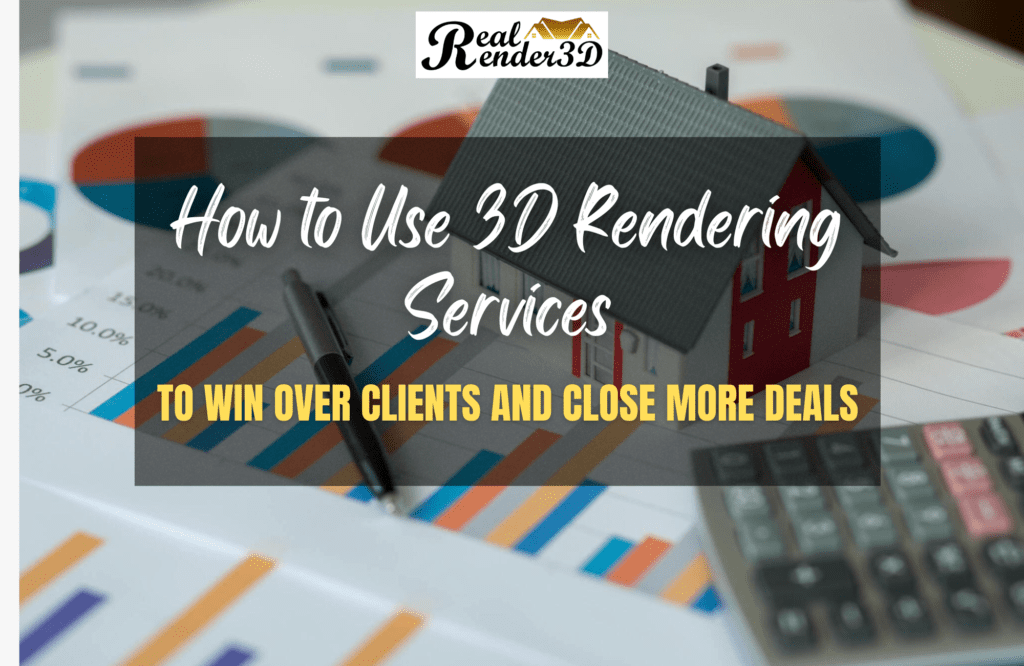Introduction
In my journey through the realms of architecture and design, spanning over decades, I’ve witnessed a significant evolution—none more transformative than the adoption of 3D rendering services. This technology has not just changed how we present ideas; it has revolutionized our entire approach to design and client interaction.
The Essence of 3D Rendering in Modern Design
At the heart of modern architectural and interior design is 3D rendering. It’s a powerful tool that brings our concepts to life, offering a window into the future of a space or building before the first brick is laid. This isn’t just about creating pretty pictures; it’s about crafting a vision that clients can connect with on a profound level. Check out this newly added blog for more details – The Impact of 3D Rendering Services on Commercial Construction Projects
Mastering Client Engagement Through Visual Excellence
3D rendering services have become my go-to for engaging clients. A well-crafted 3D architectural visualization can convey the nuances of a design in a way words cannot. Whether it’s the texture of a material in CGI visualization or the interplay of light and shadow in a 3D interior rendering, these visuals speak directly to the client’s aspirations.
Customizing Visuals to Client Dreams
One of the aspects where 3D rendering truly shines is in its ability to be tailored. Every client has a unique vision for their project, and through 3D visualization, we can adapt our designs to reflect their specific preferences and dreams, making each project deeply personal and resonant. If you are interested in learning more go checkout this blog 2024’s Guide to Boosting Property Sales with 3D Architectural Rendering.
The Interactive Advantage: Virtual and Augmented Realities
The advent of virtual and augmented reality technologies has taken 3D rendering a step further. Now, clients don’t just see their future space; they can walk through it, experiencing the design in an immersive and interactive way. This leap from static images to dynamic experiences has changed the landscape of client presentations, making them more engaging and convincing.
Demonstrating Design Versatility with 3D Rendering
Flexibility in design is crucial, and 3D rendering allows us to demonstrate this versatility effortlessly. Be it a change in the 3D floor plan, we can show clients how adaptable their project can be, reassuring them of the potential for customization.
Navigating Client Concerns with Visual Advocacy
Every project comes with its set of challenges and client concerns. However, 3D rendering has armed me with the tools to address these issues visually. Whether it’s mitigating doubts about spatial arrangements with a 3D interior rendering, these tools enable me to turn apprehensions into approvals.
Amplifying Your Market Presence Through Visual Storytelling
In today’s digital age, having a strong online presence is non-negotiable. 3D rendering services have been instrumental in enhancing my portfolio, allowing me to share my work’s stories through compelling visuals on social media and my website, attracting a wider audience and, invariably, more clients.
Elevating Your Design Practice with Professional 3D Rendering Partnerships
Partnering with professional 3D rendering services has been a pivotal decision in my career. These collaborations have not only enhanced the quality of my presentations but have also streamlined my design process, making it more efficient and impactful.
Conclusion
The journey from traditional design presentations to embracing 3D rendering marks a significant evolution in how we approach architecture and interior design. These technologies have opened up new avenues for creativity, communication, and client engagement, setting new standards in the industry. For anyone in the field of design, integrating 3D rendering services into your practice is not just an enhancement; it’s essential for staying relevant and competitive in this ever-evolving landscape.
1. How does 3D rendering improve client communication?
It provides a clear, visual representation of projects, making it easier for clients to understand and engage with the design.
2. Can 3D rendering be customized for any project?
Absolutely. 3D rendering is highly adaptable, allowing for limitless customization to match client specifications and preferences.
3. Is 3D rendering cost-effective for small projects?
Yes, 3D rendering can be very cost-effective for small projects, as it helps avoid costly design errors and allows for exploring design options without physical material expenses.
4. How long does it take to produce a 3D render?
The time can vary depending on the complexity of the project and the level of detail required. Generally, a basic 3D render can take a few days, while more complex scenes might require weeks.
5. Do I need to be tech-savvy to use 3D rendering services?
Not necessarily. While having a basic understanding of the process can be beneficial, a good 3D architectural visualization company will guide you through the process, making it easy for clients to engage with and understand the rendering outcomes.
6. Can 3D rendering be used for both interior and exterior design projects?
Absolutely. 3D rendering is versatile and can be used to visualize both interior spaces with 3D interior rendering and building exteriors through 3D exterior rendering, providing a comprehensive view of architectural projects.
Alex Smith is a content writer at RealRender3D, writing informative articles on 3D rendering, interior design, architecture, and related topics.
With over 15 years of experience at top UK architecture and interior design firms, Alex leverages his expertise to write engaging content educating readers on AEC industry trends and best practices.
Connect with Alex at alex@realrender3d.co.uk.
